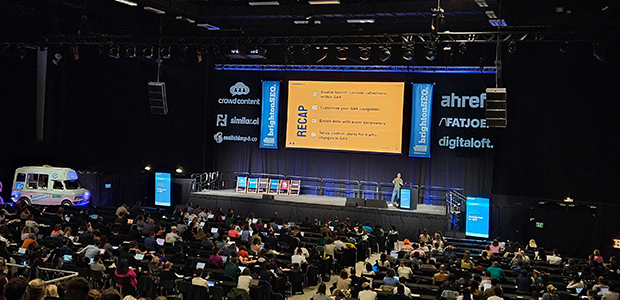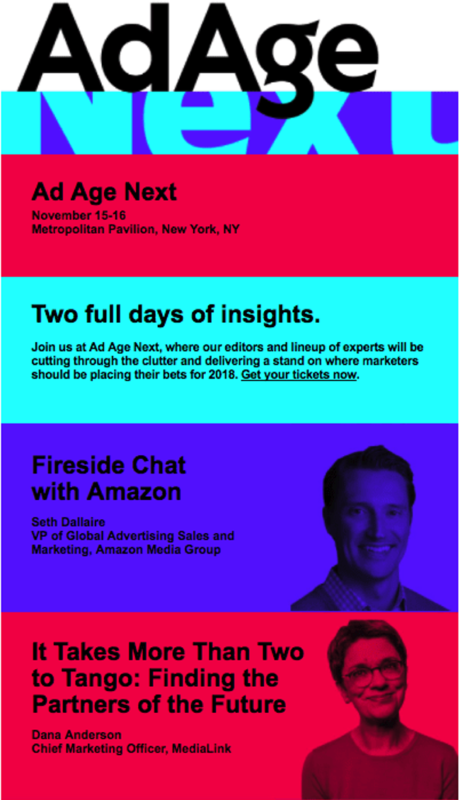
Event Branding and Identity: Developing a Cohesive Brand Strategy for Your Event
Last update: 19 January 2024 at 04:35 pm
Are you a business owner looking for new and improved ways to flourish your brand presence? Consider leveraging the power of event branding. It can allow you to create an experience for your audience where ideas come to life.
You can even invoke a sense of excitement in the attending audience through a completely different realm where elements like sights, sounds, and activities wait to amaze them.
When done right, event branding can alleviate the visibility and credibility of your brand. Furthermore, you can build long-term relationships with your stakeholders and establish a strong brand identity.
In short, event branding could be your route to offering an immersive brand experience to the customers and making long-term profits.
So, are you ready to learn tips and tricks to developing a cohesive brand strategy? Dive into this article head first! Here we explore all things related to event branding and identity.
What is event branding, and why is it important?
Event branding is a way of producing memorable and unique identities for an event that assists in communicating the personality and purpose of an event. To effectively brand an event, you must develop strong, coherent themes that appeal to your target audience.
Event branding can assist in making an event stick out from others while creating a recognizable brand identity. The objective is to humanize the event branding and create an emotional bond with the audience while delivering a brief and straightforward message that encourages engagement.
Is event branding the same as event marketing?
Although event branding and event marketing have similar goals, which is brand visibility, they are quite different from one another.
Event branding uses logos, brand names, visual elements, etc., to represent the target audience and objectives. On the other hand, event marketing uses different channels like email marketing, social media, and advertising to promote or advertise an event.
Social media can be a solid tool for creating engagement, driving interactions, and building a community around your event.
Benefits of Event Branding
An impactful event branding strategy focuses on incorporating important components of your brand identity into a unified framework, producing a stimulating experience for the audience.
And as you might know, brand experience is key to creating a lasting bond with the target audience. Hence, focusing on event branding should be a priority. It can help you significantly enhance sales and business revenue.
Can Event Branding Produce a Lasting Impression on Attendees?
It sure can! With a solid event brand, you can entice more audience, which creates a sense of excitement among the attendees and high engagement. You can leave positive impressions in your audience’s mind using effective event branding. This will increase the chances of more audience registering for the event.

Source: Brighton SEO 2023 Startups Magazine
Remember, while creating an event branding strategy, always ensure it aligns with your brand’s vision and objectives. This will allow for conveying the brand message appropriately and attract the right audience to the event.
Also, incorporate your distinctive event brand theme, consistent message, brand voice, and logo across all promotional platforms and collaterals to create a lasting impression on the attendees.
A well-thought and executed campaign can develop a sense of connection between the event brand and the attendees, influencing their future decision regarding products and services you deal with.
The Keys to Successful Event Branding Strategies
Always focus on four key event branding elements to create a memorable experience among your attendees through event branding.
1- Event Website
When it comes to event branding, event website design and content are key elements. They assist in driving attendee engagement and shaping their perspective.

Source: The Next Web Conference | My Codeless Website
Similarly, the content on your site can provide the attendees with relevant insights into your business’s theme, vision, and objective.
When branding a site for an event, always address the following:
- The font
- The logos
- The theme
- And the colors
Ensure all these elements demonstrate your brand’s values and personality.
2- Email Marketing
Yet another way of driving attention toward your event branding is through email marketing. It can help you reach prospective attendees directly and register them for important updates and announcements through your channel.

Source: AdAge
When designing the marketing email, incorporate elements that reflect your brand, such as the logo, theme, color, and fonts.
3- Social Media Presence and Marketing
Employ social media marketing to create enough buzz for your event. Run campaigns multiple times or once before, during, and after the campaign to develop interest among the attendees for upcoming events and fortify your presence.
Social media can be a solid tool for creating engagement, driving interactions, and building a community around your event.
4- Give Out Great Swag
Everyone loves to receive gifts. By providing excellent swag, you can give people a reason to remember your event brand name, ideas, and the entire event.

Source: SwagUp Inc.
Remember, when choosing virtual event swag for your attendees, ensure it is of high quality, creatively thought, and capable of making the experience worth it.
5 Tips for Creating a Stand-Out Event Brand
1- Determine your intent and audience
Identify who the event is organized for. This is because age, gender, preferences, and lifestyle can play a huge role in the stylistic choices of your event branding.
Remember, the audience tends to feel more engaged and connected with things that entice them emotionally and align with their interests and views.
2- Define your event’s intent
Once you determine the “who,” focus on determining the “why.” Why do you wish to set up the event? Will it be educational? For entertainment purposes? What its subject line will be?
Cross-check answers to these questions in your design assets so you can make relevant decisions accordingly.
3- Produce a welcome video
Before you call your target audience to the event, look for ways to get into the right vibe with them. The best way to do so is by creating a welcome video. It can help visitors gain immersive information about your brand from the get-go.
Besides, video could be an excellent medium for showcasing the in-depth detail of your event branding without worrying about your home page’s limited real estate. You can even include a few statements from your star speakers in your welcome video for added appeal.
4- Use activities for connecting your branding
You can even employ activities to connect your brand. Ensure that these activities, including social media quests, virtual escape rooms, and other types of gamification, are connected with your brand.
5- Ensure your event branding stays alive even in your post-event follow-up
Not just during the initial phase, ensure that you offer the branded experience to your stakeholders and audiences until the very end.
Following up after the event through thank you emails, on-demand video offerings, reports, etc., can help you deliver branded experience.
What are the core elements of event branding?
Brand identity, consistent messaging, and creative visual content are essential to event branding. Whereas the other event touch-points, like before the event, the event marketing, the experience of on-site attendees, and getting feedback, may assist brand experts in improving the event.
A unified approach that visually and tastefully communicates your message to the public is necessary for effective event branding.
Developing a Comprehensive Event Marketing Plan
Even if digital marketing tools might help you develop a thorough event marketing strategy, it’s crucial to comprehend the fundamentals of event marketing before entering statistics and deadlines.
The four steps listed below will assist you in developing your marketing strategy by coordinating your target market, financial constraints, and goals with quantifiable outcomes and event branding important partnerships.
1- Identify your goals and budget
The budget is the first step in any event marketing strategy. When allocating your cash for your event, be realistic about how much you can afford to spend. List all projected expenditures in as much detail as possible. Several instances include:
- Venue costs
- Marketing expenses
- Entertainment
- Catering
- Staffing
Consider your event’s short- and long-term goals after fully grasping the budget. Decide what you want the event to accomplish for you. Do you want to increase brand recognition? Entice a specific number of guests? Wish to generate more leads in the future? Etc.
Setting clear objectives for your event can help you concentrate your marketing efforts and remain on course.
Also, ensure that your goals are SMART – specific, measurable, achievable, relevant, and timely. And see to it that this is communicated with the entire team.
2- Reach out to potential influencers or collaborators
The foundation of most event marketing is networking and establishing connections with prospective partners, such as other companies and industry influencers, media sources, and fellow event organizers.
Connect with possible partners to help you spread the word and build a stronger event marketing strategy. When two or more individuals, groups, or companies work together to promote an event, each one may contribute their skills. This may lead to a comprehensive and successful marketing plan to attract more potential guests.
Remember that understanding other people’s opinions on the event you are arranging is necessary for teamwork. It’s conceivable that other stakeholders, including vendors, exhibitors, suppliers, or event partners, may have goals that differ significantly from yours. Hence, you must consider everyone’s goals when organizing the event.
3- Build an email list
Email marketing is one of the most efficient ways to advertise your event. Naturally, in order to fully benefit from this effective advertising tool, you must have a substantial and pertinent email list of prospective attendees.
One of the most efficient methods to create such an email list is to provide something of value in return for a person’s contact information. Examples of this are a free e-book, a voucher, or an early-bird discount on event registration.
Another simple and effective way is targeting your social media audience already showing some engagement and sourcing their emails through a reliable LinkedIn email finder.
Other successful strategies for developing your email list include:
- Including a sign-up form on the website for your event or a relevant blog
- Organizing a competition or giving away tickets to an event
- Including a sign-up form on the Facebook page for your event
Sending out marketing emails for your event may start once you have a list of email addresses. These messages must be thoughtfully crafted and scheduled to correspond with crucial phases of the event marketing cycle.
4- Encourage participants to share social media posts
A fantastic method to increase excitement about your event is to encourage attendees to share social media postings. This adaptable marketing strategy is helpful before, during, and post the event.
For instance, if you’re organizing a conference, you may urge attendees to tweet about their favorite sessions or upload pictures to Instagram or other social media sites with a particular event hashtag. If you’re organizing a business event, you may encourage participants to publish a brief recap on LinkedIn or the day’s highlights on their preferred social networking site.
This tactic works well because it produces social evidence for your business. If attendees perceive that others had a positive experience, they are more inclined to attend the event themselves. Additionally, it can foster a feeling of friendship among event attendees and entice them to attend the following events.
5- Use content marketing
Including content marketing in your event marketing strategy is another way to strengthen it to reach and engage a target audience and produce and disseminate valuable, pertinent, and consistent information.
Digital content can have multiple forms, such as
- E-books
- White papers
- Blog posts
- Videos
- Case studies
- Infographics
- Podcasts
If you lack the time and funds to oversee a significant content campaign, think about giving the following two sorts of content priority:
- Blog posts – Blogging is a fantastic method to tell the story of your event and pique interest in subsequent events. Ensure to be regular with your blogging; a reasonable, achievable aim could be to write one blog weekly. Include topics that your target audience will find interesting. For instance, if you’re organizing a music festival, think about writing about the event’s background, the artist, or advice for attendees.Or if you’re trying to promote a new product, consider letting people know everything related to it. A mattress company that shares the importance of good sleep and lists the best mattresses on the market could subtly promote its new product while offering value to readers.
- White papers – White papers are lengthy publications that offer in-depth information on a particular subject. They normally range in length from 5 to 10 pages. You may use free white paper downloads to emphasize the advantages of attending your event and draw visitors to your website. They can inform potential partners and sponsors about the significance and value of your event.
5 Event Branding Ideas
Below are some branding ideas that have sparked excitement and intrigued attendees post the event.
1- The Web Summit
A technology conference, the Web Summit brings together people and organizations in the global IT sector. To increase registration, TWS’s successful event branding combines components like passion, enthusiasm, and excitement that are demonstrated in a visually appealing manner.

Source: Web Summit
Their website provides pertinent information along with CTAs for registrations and collaboration purposes.
2- CES (Consumer Electronic Show)
The CES event branding, based on the foundation of passion, innovation, and progressiveness, appeals to the promise of technology.

Source: Forbes | (Photo by ROBYN BECK/AFP via Getty Images)AFP VIA GETTY IMAGES
The event’s brand idea promotes technology that improves the world and makes an all-inclusive pledge to companies in the sector. The event brand experience could be considered insightful, optimistic, and grand.
3- Ted Talks
Although the color scheme you chose for your event may influence your audience’s interest. For instance, TED Events tend to have red and black color schemes throughout, given red is a symbol of passion and enthusiasm used by TED as part of their well-considered event branding strategy.

Source: TEDBlog
Additionally, their event homepage provides guests with clear, understandable, pertinent information and a call to action to “Attend the Event” to encourage registration.
4- The Game Developers Conference
One of the events in the industry that people look forward to the most is the Game Developers Conference (GDC). The logo, fonts, colors, and theme are all considered while designing the GDC event website and its content. The call-to-action is also unambiguous, maintaining the branding on point.

Source: Game Developers Conference
The GDC event website also features an advertisement at the top, social media icons on the right, and noticeable click-through buttons for exhibiting and registering.
On the ending note,
Event branding is an excellent way of connecting with your target audience while delivering experiences that transcend the brand. Plus, the rewards your business gains from event branding experience – increased business value, marketplace credibility, and recognition, make it a worthy venture.
Event branding can be a key differentiator in this ever-evolving marketplace, given it helps your brand stand out and creates a unique identity.
But, when creating an event branding, maintain an events marketing checklist to ensure that every aspect of event branding is handled. Or, work with industry experts who can create, manage and measure your events for you. Find them through Sortlist’s archives!





